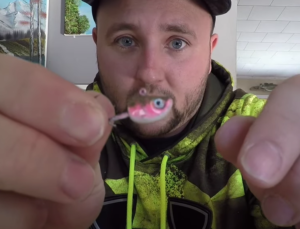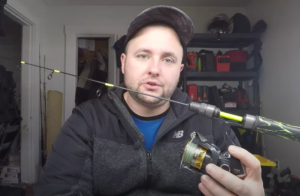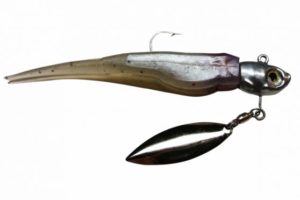How to Get More Vibration From Your Spinnerbaits
 Spinnerbaits catch lots of bass. Plain and simple. But there are ways to tweak them to make them catch even more bass! Today we’re going to talk about How to Get More Vibration From Your Spinnerbaits, giving you an advantage that will put more bass in your boat.
Spinnerbaits catch lots of bass. Plain and simple. But there are ways to tweak them to make them catch even more bass! Today we’re going to talk about How to Get More Vibration From Your Spinnerbaits, giving you an advantage that will put more bass in your boat.
What Shape and Size?
Most people know that the shape and size of the blades on your spinnerbait will determine how much they vibrate. Some people, though, don’t understand how much difference the blades can make.
These People Are Missing Out on Lots of Bass!
 Colorado blades are, by far, the best blades for creating lots of vibration. They are superior to willow leaf blades and Indiana blades. Their big, round shape moves a lot of water as they spin. And the amount of water they move helps attract more fish.
Colorado blades are, by far, the best blades for creating lots of vibration. They are superior to willow leaf blades and Indiana blades. Their big, round shape moves a lot of water as they spin. And the amount of water they move helps attract more fish.
This is super important in specific conditions, such as muddy water, stained water, low-light conditions and after dark.
The bigger the blade, the more water it moves, and the more vibration it creates.
Blades or Wire?
What most people don’t realize, though, when it comes to How to Get More Vibration From Your Spinnerbaits, is that the wire you use to make your spinnerbaits also has a huge impact on vibration.
Different gauges and types of wire can either enhance or dampen vibration.
 Heavy wire stifles vibration. It’s stiff, and it doesn’t “give” as the blade rotates. This muffles the vibration of the blade.
Heavy wire stifles vibration. It’s stiff, and it doesn’t “give” as the blade rotates. This muffles the vibration of the blade.
Lighter wire allows the blade to move freely. And this movement gets transmitted to the wire, sending more vibrations out into the water. The bass feel these vibrations, which attracts them to the lure.
Knowing which blades to choose and which types and sizes of wire to use is critical to building a spinnerbait that will vibrate as much as possible.
If you want to learn all you need to know about How to Get More Vibration From Your Spinnerbaits, be sure to watch the video below! It’s stuffed full of tips and tricks that will help you immensely.
Items used for this project:
- T-Blades
- Premium Finish Colorado Blades
- Hildebrandt Premium Spinner Blades
- Premium Finish Deep Cup Blades
- Minn-O-Spin Spinnerbaits
- Signature Spin Heads
If you enjoyed this post, please be sure to like it and share it with your friends.
To learn more about choosing the right blades for your spinnerbait, click here.
And, as always, if you need any kind of lure-making supplies, be sure to visit our website, at http://lurepartsonline.com






